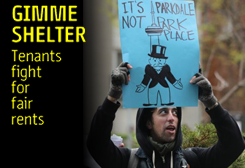HARD TRUTHS
The evidence for hyped 'summer of strikes' is thin

Based on an article By Adam D.K. King
The Maple
14 Aug 2023
THE NUMBERS JUST AREN’T THERE. There is no “strike wave” to mark a rising tide of union militancy—despite all the talk and wishful thinking. In fact it’s pretty much the reverse.
Strikes have been trending down since 2015. There is no sign 2023 will break that trend.
Highly visible strikes — particularly when they manage to generate and sustain public support — are important for the labour movement and can encourage workers across the economy to demand more. But just because such actions are on the public radar doesn’t necessarily mean they are indicative of an appreciable growth in strike activity across the whole of the economy.
Downward trend since 2015
The year with the greatest number of work stoppages in the last decade was 2015 with 188. There has been no increase in yearly strike action since then. And, it doesn’t look like 2023 will reverse the trend.
We’re on track for around 130 work stoppages in 2023. In other words, strikes seem to again be trending down, not up.
Against a broader historical background, the entire past decade looks paltry. There have been times—such as the 1970s—when Canadian unions struck hundreds of times per year.
Other factors need to be considered when measuring union militancy like: measuring the number of workers involved in strikes and the “person-days lost”. But, considering the overall decline in these figures too, it remains difficult to argue we’re in the midst of a labour upsurge.
Labour ‘outbursts’
What conclusions can be drawn from the available data? First, the evidence for a widespread “strike wave” is thin at best. There is undoubtedly a renewed interest in unionization, and it’s a welcome change that some in the mainstream media have picked up on this. But, at this point, a surge in worker militancy is mostly still political aspiration.
Second, it might be more accurate to characterize the post-pandemic years as a time of labour “outbursts.” Rather than a sustained wave of strikes or union militancy, what we have witnessed are relatively short and contained bursts of worker activity.
In this vein, 2020 and 2022 exemplify this tendency. The former, mostly a pre-pandemic surge in activity among Ontario teachers in response to a particularly egregious piece of wage restraint legislation; the latter made up largely of uncoordinated attempts by unions to address an inflationary crisis that had been ravaging their members’ real wages.
Employer pushback
At the same time, the data reviewed here could also be read as evincing a less-remarked upon but equally noteworthy employer pushback. An increase in person-days lost to strikes — but more importantly, growth in the share of union contracts arrived at through arbitration — point to employers resisting union demands across the bargaining table and as workers march outside of the factory gates.
Periods of economic uncertainty — as the post-pandemic years have been — are often characterized by class struggle. Although we might prefer this to mean simply a growth in workers asserting their demands, we need also to recognize that class struggle is a two-way street—with employers ready to give as good as they get and more.
- 30 -













Add new comment